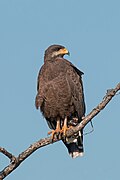Reconstruction:Proto-Turkic/kepelek
Hello, you have come here looking for the meaning of the word Reconstruction:Proto-Turkic/kepelek. In DICTIOUS you will not only get to know all the dictionary meanings for the word Reconstruction:Proto-Turkic/kepelek, but we will also tell you about its etymology, its characteristics and you will know how to say Reconstruction:Proto-Turkic/kepelek in singular and plural. Everything you need to know about the word Reconstruction:Proto-Turkic/kepelek you have here. The definition of the word Reconstruction:Proto-Turkic/kepelek will help you to be more precise and correct when speaking or writing your texts. Knowing the definition ofReconstruction:Proto-Turkic/kepelek, as well as those of other words, enriches your vocabulary and provides you with more and better linguistic resources.
Proto-Turkic
Etymology
From *kepeli (“butterfly”) + *-ak (“diminutive suffix”). The rounding in some of the descendants is due to the neighboring labial /p/. Some of the descendants also exhibit metathesis to *kelepek. Eren (1999) suggests that this word is an onomatopoeic in origin.
Clauson suggets a loanword, but does not give a source language, pointing that it is only present in Oghuz, Karluk and Kipchak branches.
Compared to Proto-Mongolic *kibe (“moth”) (Mongolian хив (xiv, “moth”)) and Japanese コオロギ (kōrogi, “cricket”) by Altaicists, although such comparisons are deemed as unscientific by the consensus.
Noun
*kepelek
Declension
| singular 3) | |
|---|---|
| nominative | *kepelek |
| accusative | *kepelekig, *kepelekni1) |
| genitive | *kepelekniŋ |
| dative | *kepelekke |
| locative | *kepelekde |
| ablative | *kepelekden |
| allative | *kepelekgerü |
| instrumental 2) | *kepelekin |
| equative 2) | *kepelekče |
| similative 2) | *kepelekleyü |
| comitative 2) | *kepelekligü |
1) Originally used only in pronominal declension.
2) The original instrumental, equative, similative, and comitative cases have fallen into disuse in many modern Turkic languages.
3) Plurality in Proto-Turkic is disputed. See also the notes on the Proto-Turkic/Locative-ablative case and plurality page on Wikibooks.
2) The original instrumental, equative, similative, and comitative cases have fallen into disuse in many modern Turkic languages.
3) Plurality in Proto-Turkic is disputed. See also the notes on the Proto-Turkic/Locative-ablative case and plurality page on Wikibooks.
Descendants
- Oghuz:
- Karluk
- Kipchak:
- Siberian:
References
- al-Kashgarî, Mahmud (1072–1074) Besim Atalay, transl., Divanü Lûgat-it-Türk Tercümesi (Türk Dil Kurumu Yayınları; 521) (in Turkish), 1985 edition, volume I, Ankara: Türk Tarih Kurmu Basımevi, published 1939–1943, page 448
- Clauson, Gerard (1972) “kepe:li:”, in An Etymological Dictionary of pre-thirteenth-century Turkish, Oxford: Clarendon Press, →ISBN, →OCLC, page 689
- Levitskaja, L. S., Dybo, A. V., Rassadin, V. I. (1997) Etimologičeskij slovarʹ tjurkskix jazykov (in Russian), volume V, Moscow: Jazyki russkoj kulʹtury, page 29
- The template Template:R:tr:Eren does not use the parameter(s):
entry=kelebek
Please see Module:checkparams for help with this warning.Eren, Hasan (1999) “Proto-Turkic/kepelek”, in Türk Dilinin Etimolojik Sözlüğü (in Turkish), Ankara: Bizim Büro Basım Evi, page 227 - Nişanyan, Sevan (2002–) “kelebek”, in Nişanyan Sözlük
- Räsänen, Martti (1969) Versuch eines etymologischen Wörterbuchs der Türksprachen (in German), Helsinki: Suomalais-ugrilainen seura, page 291
- Starostin, Sergei, Dybo, Anna, Mudrak, Oleg (2003) “*kepelek”, in Etymological dictionary of the Altaic languages (Handbuch der Orientalistik; VIII.8), Leiden, New York, Köln: E.J. Brill
- Tenišev E. R., editor (1984–2006), Sravnitelʹno-istoričeskaja grammatika tjurkskix jazykov: (in Russian), Moscow: Nauka, page 187
See also
| Animals in Turkic | |||||
|---|---|---|---|---|---|
 |
dog: *ï̄t |
 |
hunting dog: *eker |
 |
hen: *tiakïgu |
 |
lark: *torgay |
 |
dove, pigeon: *kȫkerčin |
 |
quail: *bïldurčïn |
 |
sparrow: *serče |  |
hawk, falcon: *kïrguy |
 |
goose: *kāŕ |
 |
wolf: *bȫrü |
 |
cow: *ingek |
 |
calf: *buŕagu |
 |
camel: *tebe |
 |
young of camel: *kȫĺek, *botu |
 |
horse: *at |
 |
foal: *kulun |
 |
worm: *kūrt |
 |
snake: *yï̄lan |
 |
fox: *tilkü |  |
goat: *keči |  |
he-goat: *teke |
 |
lion: *arsïlan |
 |
fish: *bālïk | carp bream: *čapak | |
 |
donkey: *eĺčgek |  |
carp: *siāŕgan |  |
catfish: *yāyïn |
 |
beaver: *kunduŕ |  |
hedgehog: *kirpi |  |
badger: *borsmuk |
 |
fly, mosquito: *siŋek |  |
wasp, bee: *ārï |  |
gadfly: *bȫgen |
 |
moth: *küńe |  |
louse: *bït |  |
earthworm: *sïbuĺgan |
 |
yak: *kotuz |  |
colt: *sïp |  |
dragon: *siāŕgan |
 |
worm: *kūrt |  |
deer: *keyik, *sïgun, *bulan, *bugu |  |
lizard: *keleŕ |

